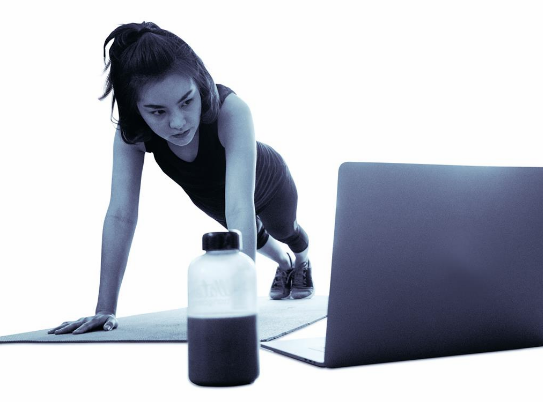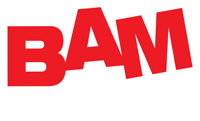Reinforce positive new beliefs
Figuring out what’s important to consumers
According to behavioral science, the set of beliefs that a consumer holds about the world is a key influencer of consumer behavior. Beliefs are psychological—so deeply rooted that they prevent consumers from logically evaluating alternatives and thus perpetuate existing habits and routines. Companies that attempt to motivate behavioral change by ignoring or challenging consumers’ beliefs are fighting an uphill battle.
The COVID-19 crisis, however, has forced many consumers to change their behaviors, and their new experiences have caused them to change their beliefs about a wide range of everyday activities, from grocery shopping to exercising to socializing. When consumers are surprised and delighted by new experiences, even long-held beliefs can change, making consumers more willing to repeat the behavior, even when the trigger (in this case, the COVID-19 pandemic) is no longer present. In other words, this is a unique moment in time during which companies can reinforce and shape behavioral shifts to position their products and brands better for the next normal.
When consumers are surprised and delighted by new experiences, even long-held beliefs can change, making consumers more willing to repeat the behavior.
For example, approximately 15 percent of US consumers tried grocery delivery for the first time during the COVID-19 crisis. Among those first timers, more than 80 percent say they were satisfied with the ease and safety of the experience; 70 percent even found it enjoyable. And 40 percent intend to continue getting their groceries delivered after the crisis, suggesting that they’ve jettisoned any previously held beliefs about grocery delivery being unreliable or inconvenient; instead, they’ve been surprised and delighted by the benefits of delivery.
Another example of changing beliefs involves at-home exercise. The US online fitness market has seen approximately 50 percent growth in its consumer base since February 2020; the market for digital home-exercise machines has grown by 20 percent. It’s likely that many people who tried those fitness activities for the first time during the pandemic believed that at-home exercise couldn’t meet their exercise needs. That belief has clearly changed for many of these consumers: 55 percent who tried online fitness programs and 65 percent who tried digital exercise machines say they will continue to use them, even after fitness centers and gyms reopen. To reinforce the new belief that online fitness can be motivating and enjoyable, NordicTrack, in a recent TV ad titled “Face Off,” shows that online workouts can foster the same friendly competition and connection that people look for when they go to the gym or attend in-person exercise classes.
An effective way to reinforce a new belief is to focus on peak moments—specific parts of the consumer decision journey that have disproportionate impact and that consumers tend to remember most. Peak moments often include first-time experiences with a product or service, touchpoints at the end of a consumer journey (such as the checkout process in a store), and other moments of intense consumer reaction.
Some companies have focused on enhancing the consumer’s first-time experience. Plant-based-meat manufacturer Beyond Meat, for instance, was already benefiting from delays in meat production in the early days of the COVID-19 crisis: its sales more than doubled between the first and second quarters of 2020. In collaboration with local restaurants and catering companies, the company has been delivering free, professionally prepared food to hospitals and other community centers. By giving away Beyond Burgers prepared by professional chefs, Beyond Meat is creating positive first experiences with its product at a time when consumers are more open to trial.
As the consumer journey has changed, so have the peak moments, and it’s crucial for companies to identify and optimize them. For example, a peak moment in a grocery store might be the discovery of an exciting new product on the shelf. In the online-grocery journey, however, a peak moment might instead be on-time delivery or the “unboxing” of the order (the experience of taking the delivered items out of the packaging). Grocers could consider including a handwritten thank-you note or some other surprise, such as a free sample, to reinforce consumers’ positive connections with the experience.
Highly emotional occasions can spark intense consumer reactions and therefore present an opportunity for companies to create peak moments associated with their products or brands. For example, when graduations shifted from formal, large-scale ceremonies to at-home, family celebrations, Krispy Kreme offered each 2020 graduate a dozen specially decorated doughnuts for free. With that promotion, the company connected its brand with an emotional event that may not have been a key occasion for doughnuts prior to the pandemic.
Shape emerging habits with new products
Companies can nudge consumers toward new habits through product innovation. For instance, the COVID-19 crisis has spurred consumers to become more health oriented and increase their intake of vitamins and minerals. Unilever reported a sales spike in beverages that contain zinc and vitamin C, such as Lipton Immune Support tea. The company is therefore rolling out such products globally. It’s also aligning its innovation priorities with consumers’ emerging health-and-wellness concerns.
Similarly, packaged-food companies can encourage the habit of cooking at home. Spice manufacturer McCormick’s sales in China have sustained double-digit increases compared with 2019, even as the Chinese economy has reopened and people go back to their workplaces. The same pattern could play out in other countries. Kraft Heinz’s innovation agenda for its international markets now prioritizes products that make home cooking pleasurable, fast, and easy—products such as sauces, dressings, and side dishes. These will be targeted at “light” and “medium” users of Kraft Heinz products.
Sustain new habits, using contextual cues
Habits can form when a consumer begins to associate a certain behavior with a particular context; eventually, that behavior can become automatic. To help turn behaviors into habits, companies should identify the contextual cues that drive the behaviors. A contextual cue can be a particular task, time of day, or object placement. For example, more consumers are keeping hand sanitizer and disinfecting wipes near entryways for easy access and as a reminder to keep hands and surfaces clean. Product packaging and marketing that reinforces the put-it-by-the-door behavior can help consumers sustain the habit.
Some companies may need to identify—and create—new contextual cues. Before the COVID-19 crisis, a contextual cue for chewing-gum consumption was anticipation of a social interaction—for instance, before going to a club, while commuting to work, and after smoking. As social occasions have waned during the pandemic, a chewing-gum manufacturer must look for new contextual cues, focusing largely on solo or small-group activities, such as gaming and crafting. Gum manufacturers could consider designing packaging, flavors, and communications that reinforce those new associations.
Align messages to consumer mindsets
Connecting with consumers ‘in the moment’
People across the country have felt an intensified mix of anxiety, anger, and fear because of recent events, making marketing a tricky terrain to navigate. The heightened emotions and increased polarization of the past few months could drive lasting changes in consumers’ behavior and shape their long-term preferences. Companies should therefore ensure that all their brand communications are attuned to consumer sentiment. The quality of a company’s communication and its ability to strike the right tone will increasingly become a competitive advantage.
McKinsey’s consumer-sentiment surveys show that consumers are paying closer attention to how companies treat their employees during this crisis—and taking note of companies that demonstrate care and concern for people. That has implications for how brands connect with consumers and what types of messages will resonate. Hair-care brand Olaplex, for example, became one of the most mentioned hair-care brands on social media when it started an affiliate program: the company donated a portion of its proceeds from product sales to customers’ local hairstylists, helping them stay afloat during salon closures.
That said, consumers will see through—and reject—messages and actions that are performative and that seek to commercialize social issues. A brand’s communications must align with its purpose; otherwise, the messages won’t ring true. Testing marketing messages among a diverse group of consumers, in the context in which those messages will appear, could help prevent costly missteps.
Analyze consumer beliefs and behaviors at a granular level
Using qualitative methodologies
Consumer beliefs, habits, occasions, and emotional-need states will continue to evolve rapidly over the next year or two as the world awaits a COVID-19 vaccine. For consumer companies to stay abreast of those changes, monitoring product sales alone won’t be sufficient. Companies must also conduct primary consumer-insights work, with a focus on identifying changed behaviors and associated changed beliefs and motivators to get a comprehensive picture of the changing consumer decision journey.
Qualitative, exploratory research will have a particular role to play as a precursor to (and, in some cases, a substitute for) quantitative research. Digital data-gathering and monitoring techniques—such as mobile diaries, social-media “listening,” and artificial-intelligence-driven message boards—will be vital tools to help companies understand emerging behaviors and contextual cues. When structured well, those insights generate new thinking within an organization that can be validated through larger-scale surveys and in-market testing. Companies can then refine their product offerings and marketing messages accordingly.
In addition, granular analyses of footfall data and omnichannel sales will unearth telling details, such as which geographic regions are seeing in-person commerce rebound first and which products consumers are buying (such as smaller pack sizes to avoid sharing, activewear versus office wear, and so on). Whereas in the past, companies might have fielded high-level usage and attitude surveys and brand trackers a few times a year, it’s especially important now for companies to keep a closer eye on the evolution of consumer behavior on a weekly or monthly basis.
The COVID-19 crisis has changed people’s routines at unprecedented speed—and some of those changes will outlast the pandemic. Even in states and cities that have reopened, consumers remain cautious about resuming all of their precrisis activities. We’ve seen differences in consumer behavior across geographic markets and demographic groups, and those differences will only widen during the recovery phase, given that the health, economic, and social impact of COVID-19 isn’t uniform. Companies that develop a nuanced understanding of the changed beliefs, peak moments, and habits of their target consumer bases—and adjust their product offerings, customer experiences, and marketing communications accordingly—will be best positioned to thrive in the next normal.

